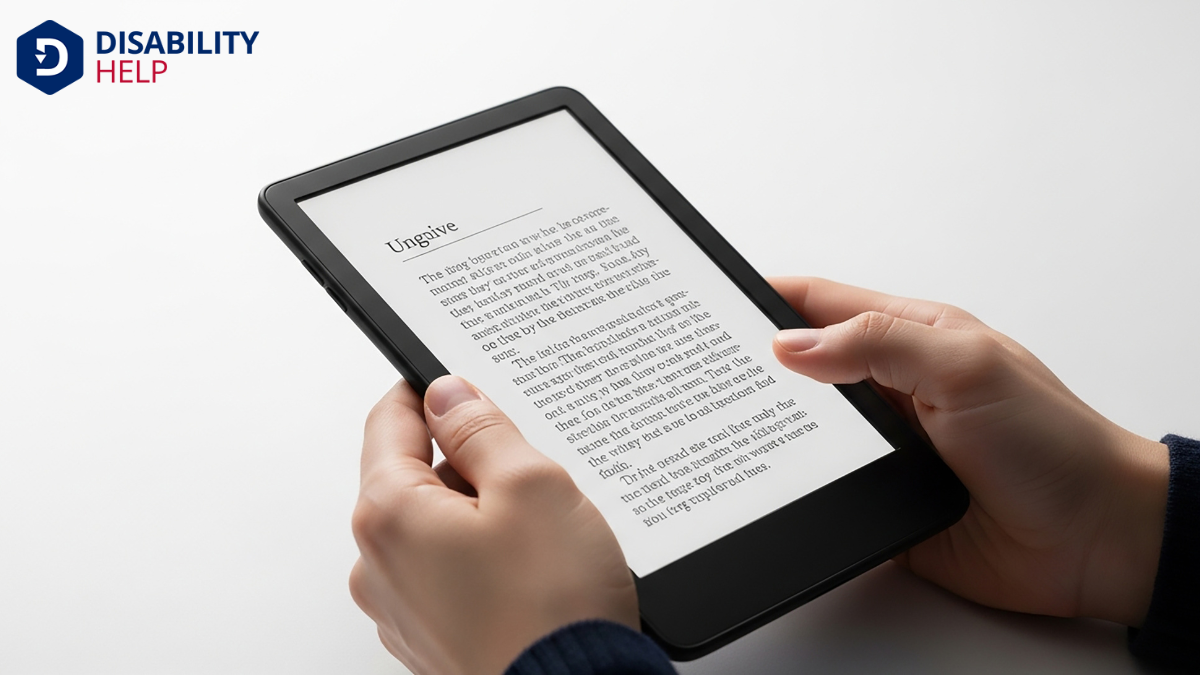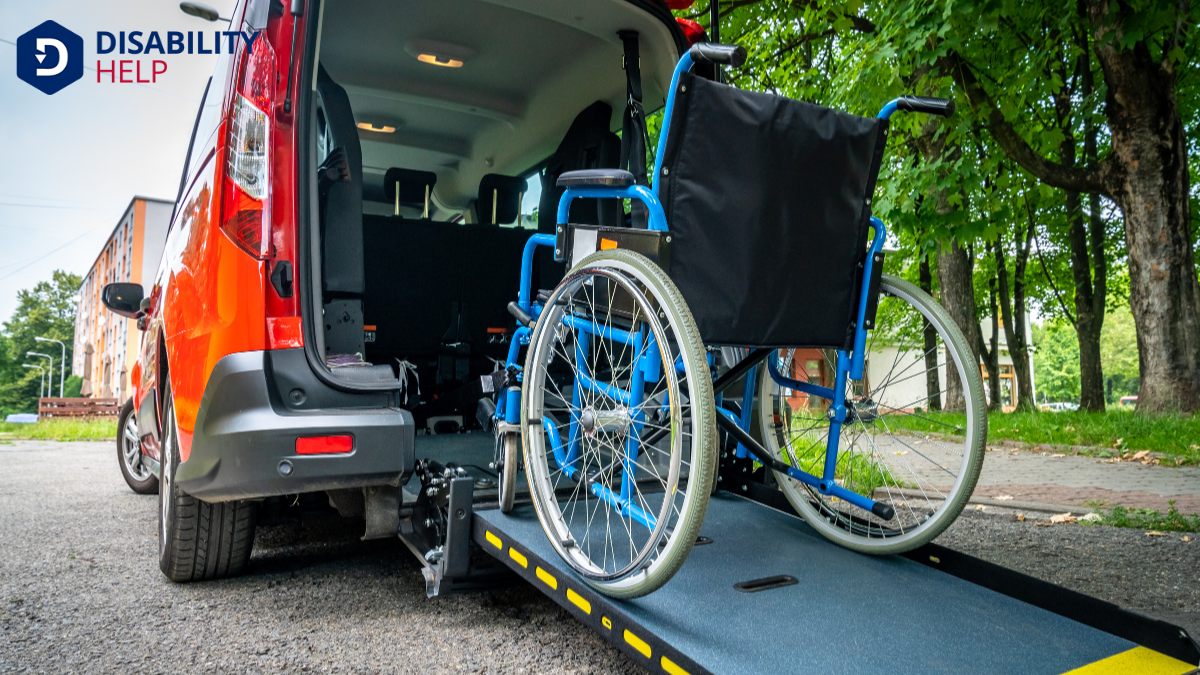Let's talk about standard assistive devices, which are essential tools that help individuals with disabilities lead more independent lives. These devices range from hearing aids and screen readers to mobility aidsDevices designed to help individuals move around more easily, such as canes, walkers, or wheelchairs... and communication technologies. Each type of device is designed to address specific needs, making everyday tasks more manageable. As we explore these technologies, we'll see how they contribute to accessibilityThe design of products, devices, services, or environments to be usable by people with disabilities.... and inclusionThe practice of creating environments in which any individual or group can be and feel welcomed, res..., improving the quality of life for many. Interested in discovering more?
Key Takeaways
- Hearing aids amplify sound, helping users discern speech from background noise and improving auditory experiences.
- Screen readers convert text to speech, enabling digital content navigation for individuals with visual impairments.
- Mobility aids like canes, walkers, and wheelchairs provide stability and enhance independence in daily life.
- Educational technologies include adaptive learning software and text-to-speech tools, supporting diverse learning styles.
- Environmental control systems allow users to manage home environments through voice commands or apps, promoting independence and comfort.
Hearing Aids and Assistive Listening Devices
When it comes to improving our auditory experience, hearing aids and assistive listening devices play an essential role. They greatly enhance our ability to engage with the world by amplifying sounds, allowing us to participate fully in conversations and activities.
These devices aren't just about volume; they help us discern speech from background noise, making it easier to understand others in busy environments.
Hearing aids are tailored to our specific needs, fitting comfortably while providing personalized sound amplification.
Assistive listening devices, such as personal amplifiers, loop systems, and FM systems, bridge gaps in challenging listening situations. They connect directly to audio sources like televisions or public address systems, ensuring we don’t miss important information.
Together, these tools enrich our auditory experience and improve our quality of life.
Screen Readers and Magnification Software

Enhancing our sensory experiences doesn't stop with hearing; it extends to vision as well. For those of us with visual impairments, screen readers and magnification software transform how we interact with digital content.
Screen readers convert text to speech, allowing us to navigate computers and smartphones audibly. They announce everything from emails to website content, enabling us to stay connected and informed.
Magnification software, on the other hand, enlarges on-screen elements, making text and images more accessible. This tool is essential for those of us with low vision, providing the ability to adjust contrast and zoom into details we might otherwise miss.
Together, these technologies empower our digital experiences, ensuring that we can access the world of information with ease and independence.
Mobility Aids and Wheelchairs
While technology has revolutionized the way we interact with the world, mobility aids and wheelchairs have transformed how we traverse it. These tools empower us to move freely, ensuring independence and accessibility in our daily lives.
From canes and walkers to manual and power wheelchairs, each device serves unique needs. Canes and walkers provide stability, preventing falls and enhancing balance. For those needing more support, wheelchairs offer comfort and ease of movement.
Manual wheelchairs require physical effort but provide excellent maneuverability. Meanwhile, power wheelchairs use technology to assist those with limited strength, traversing diverse terrains with ease.
Choosing the right device depends on individual needs. Let’s embrace these innovations, ensuring everyone can explore the world without limitations.
Communication Devices and Speech Generating Technologies
Just as mobility aids enable physical freedom, communication devices and speech-generating technologies open new avenues for connection and expression. These tools empower those of us with speech and communication challenges to interact more fluidly with others.
Devices range from simple picture boards to sophisticated electronic systems that convert text into speech, accommodating various needs and preferences.
Many of these technologies are customizable, allowing us to tailor them to our unique communication styles. For instance, software on tablets or computers can be programmed with personal vocabulary, making conversations more natural.
Speech-generating devices offer a voice to those who might otherwise remain silent, fostering independence and participation in social interactions. As we explore these technologies, we find that they bridge gaps and enrich our communication experiences.
Adaptive Tools for Daily Living

Let's explore how adaptive tools can transform our daily routines.
From essential kitchen aids that simplify meal preparation to personal mobility solutions that enhance our movement, these devices play a vital role in fostering independence.
Together, we'll discover how these practical tools can make everyday tasks more manageable and enjoyable.
Essential Kitchen Aids
Maneuvering the kitchen can be an intimidating task for those with physical limitations, but essential kitchen aids are here to transform daily challenges into manageable routines.
Let’s explore how these tools can enhance our cooking experience and independence.
First, adaptive utensils with ergonomic handles offer a secure grip, making it easier for us to enjoy meals without strain. Non-slip mats keep cutting boards steady, reducing the risk of accidents. Electric can openers and jar openers simplify opening containers, while lightweight pots and pans reduce the effort needed for lifting.
Additionally, one-handed cutting boards with built-in spikes can stabilize food for safe slicing.
With these aids, we can focus on the joy of cooking and dining, rather than the obstacles.
Personal Mobility Solutions
When it comes to maintaining our independence and mobility in daily life, personal mobility solutions play an essential role. These adaptive tools support us in traversing our environments with ease and confidence.
Whether we need assistance due to age, injury, or disability, devices like wheelchairs, walkers, and canes are indispensable. Each solution is tailored to meet our specific needs, ensuring safety and comfort.
Let's consider wheelchairs: they provide excellent support for those unable to walk. Walkers, with their sturdy frames, offer balance and stability. Canes are perfect for those who need a little extra support.
Beyond these, there are also motorized scooters for increased independence. By choosing the right mobility device, we enhance our ability to engage fully in daily activities.
Educational and Learning Assistive Technologies
Let's explore how educational and learning assistive technologies can transform our learning experiences.
Adaptive learning software tailors lessons to our individual needs, while text-to-speech tools make reading accessible to everyone.
Interactive whiteboards engage us in a dynamic way, fostering collaboration and understanding in the classroom.
Adaptive Learning Software
Although the landscape of education is constantly evolving, adaptive learning software stands out as a transformative force in personalized education. It tailors the learning experience to meet each student's unique needs and pace. By analyzing data on our interactions and progress, these programs provide customized content and exercises, helping us focus on areas that require improvement. This approach not only enhances our understanding but also boosts our confidence by allowing us to learn at our own pace.
Adaptive learning software benefits educators as well. It offers insights into student performance and identifies trends or challenges. Teachers can then adjust their instruction methods accordingly, ensuring that every student receives the support they need.
As we embrace these technologies, we're creating a more inclusive and effective learning environment.
Text-to-Speech Tools
Text-to-speech (TTS)A technology that converts written text into spoken words, used by individuals with visual impairmen... tools have become invaluable assets in modern education, offering significant advantages for both students and educators. They transform written text into spoken words, making content accessible to individuals with reading difficulties or visual impairments.
TTS tools help us engage with materials in new ways, ensuring all students can participate fully in learning activities. We can use these tools to enhance comprehension and retention by hearing and seeing information simultaneously.
Teachers benefit from TTS by having another method to present material, catering to diverse learning styles. Additionally, TTS tools promote independent learning, allowing students to review content at their own pace.
This technology empowers us to create inclusive classrooms, where every learner's needs are met effectively and efficiently.
Interactive Whiteboards Use
Interactive whiteboards have revolutionized classrooms by offering dynamic and engaging ways to present information. They allow us to interact directly with the content, turning static lessons into interactive experiences. By using touch, we can drag, drop, highlight, and draw, making lessons more participatory. This technology supports various learning styles, catering to visual, auditory, and kinesthetic learners.
We can also integrate multimedia resources, providing instant access to videos, images, and web content. This keeps students engaged and helps illustrate complex concepts clearly.
Real-time collaboration becomes easier, allowing students to participate actively in lessons. Interactive whiteboards encourage group activities and discussions, fostering a more inclusive educational environment.
Let's embrace this technology to enhance our teaching and make learning more impactful for everyone.
Environmental Control Systems and Smart Home Solutions
As technology continues to evolve, we find ourselves increasingly surrounded by innovative solutions that transform our living spaces into more accessible and efficient environments.
Environmental control systems and smart home solutions are at the forefront, offering assistive devices that enhance independence for individuals with disabilities.
These systems allow us to control lighting, temperature, and appliances with just a voice command or a tap on our smartphones.
Conclusion
In exploring standard assistive devices, we've seen how these tools transform lives, enhancing accessibility and independence for individuals with disabilities. From hearing aids and screen readers to mobility aids and smart home solutions, each device plays an essential role in promoting comfort and safety. As we continue to embrace and innovate these technologies, let's remain committed to creating a more inclusive world where everyone can thrive and participate fully in everyday life. Together, we can make a difference.






